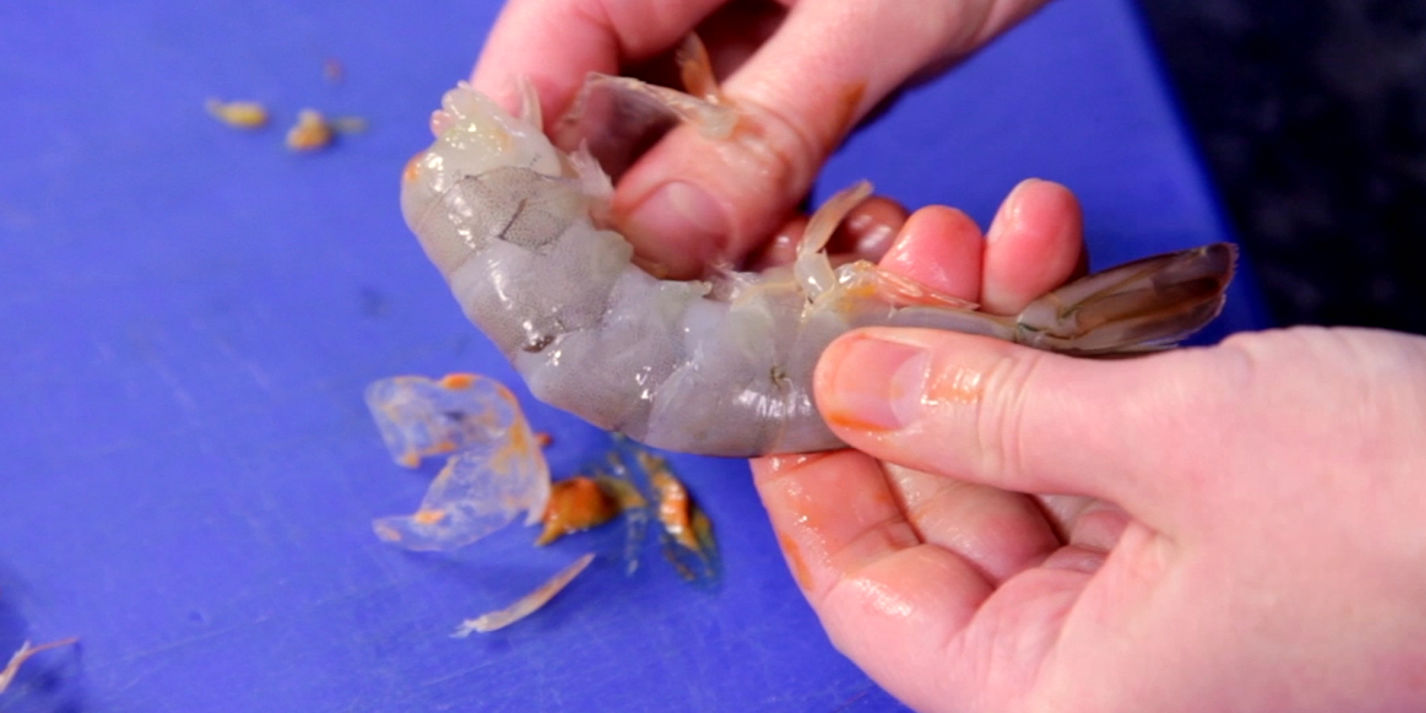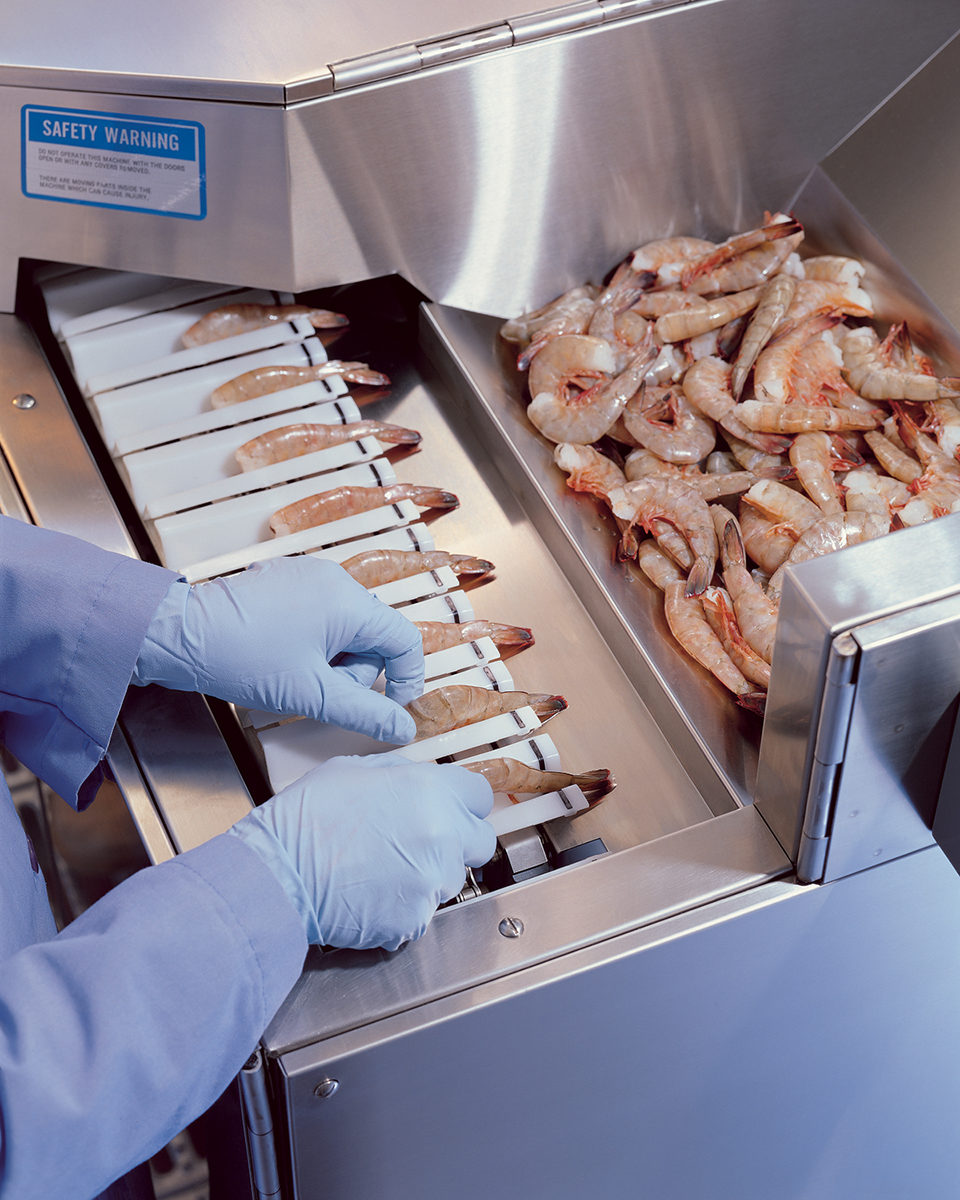Prawns are a popular seafood ingredient enjoyed in cuisines worldwide. Their sweet, succulent meat makes prawns a customer favorite in restaurants and home kitchens. However, before reaching the consumer’s plate, prawns undergo an extensive peeling process to remove the shell and vein. This is especially critical for commercial prawn suppliers dealing with massive volumes.
In this article, we’ll examine commercial prawn peeling methods in-depth. We’ll cover the different techniques used, specialized machines involved, and advantages of commercial peeling. Whether you are a seafood processor looking to optimize operations or just a prawn aficionado, read on to satisfy your curiosity!
An Overview of Commercial Prawn Peeling
Commercially peeling prawns involves removing the hard outer shell or exoskeleton along with the intestinal vein running along the back. This process prepares the prawns for cooking by exposing the edible meat.
For suppliers processing hundreds of pounds daily, peeling each prawn by hand is not viable. Instead, they rely on specialized equipment to automate peeling. The two main methods used are:
- Machine peeling – Fast, efficient peeling machines designed specifically for shellfish processing.
- Hand peeling – Manual peeling by workers, usually in smaller operations.
Today, the bulk of commercial prawn peeling is done by machines for their superior speed, sanitation, and reliability. Next, we’ll examine both machine and hand peeling processes closely.
Commercial Prawn Peeling Machines
Specially engineered peelers can process hundreds or even thousands of pounds of prawns per hour This high throughput is essential for the productivity of processing facilities
Some popular examples of commercial prawn peelers include:
- Laitram Machinery Peelers – The original patented shrimp peeling machine invented in 1949. Uses roller mechanisms to remove shells.
- Jonsson Peelers – Automatically clamps, cuts, and peels individual prawns. Self-adjusts for different sizes.
- Yamamoto Peelers – Japanese peelers using strong water jets to loosen shells after blanching.
- Baader Peelers – Specialized German machines for peeling cold water prawns.
The exact peeling process varies by machine but generally involves:
- Prawns are loaded into hoppers which orient them correctly.
- They enter the peeling section where shell is removed by rollers, water jets or other methods.
- A deveining mechanism removes the intestinal tract.
- Peeled prawns exit the machine with discarded shells.
Proper adjustment and maintenance are critical for efficiency and to avoid damaging the delicate meat. When implemented correctly, automation provides monumental labor cost savings versus hand peeling.
Hand Peeling Prawns
In smaller operations without access to peeling machines, prawns are peeled manually by hand. This traditional method is more labor-intensive but offers some unique advantages such as:
- Lower startup costs than automated systems.
- Ability to handle different prawn varieties and conditions.
- Precise control over final product quality.
The process involves workers manually pulling off the head and shell segments one by one. Small knives may be used to carefully slice the backs for deveining. It requires experience and skill to peel prawns cleanly by hand.
While slower than machines, hand peeling provides employment opportunities in local communities. Some artisanal suppliers also prefer the control it allows over their final product.
Overall, hand peeling is better suited for niche producers with small batches. Large processors need automation to achieve the high volumes, efficiency and consistency demanded today.
The Benefits of Commercial Prawn Peeling
Transitioning from hand to machine peeling provides major advantages:
- Higher Productivity – Machines can peel up to 1,000 lbs per hour, multiplying output.
- Increased Profits – Greater yields and lower labor costs improve profit margins.
- Enhanced Food Safety – Automated peeling reduces risks of cross-contamination.
- Consistency – Machines peel prawns uniformly for a reliable end product.
- Sustainability – Efficient peeling reduces waste, water, and energy usage.
For large or growing seafood companies, the return on investment from commercial peelers is well worth the capital costs. Their performance and reliability lead to both revenue and bottom line gains.
Comparing Methods for Different Contexts
Choosing a peeling method requires assessing your facilities, volumes, and needs:
- Hand Peeling – Better for small-scale artisanal producers. Allows meticulous quality control by skilled workers.
- Machine Peeling – Ideal for high-volume seafood processors. Provides major efficiency gains.
In general, automated peelers offer unmatched speed, sanitation, and productivity for commercial prawn suppliers. Specialized machines can peel virtually any shrimp variety while optimizing yield. But niche producers may prefer the versatility and control of hand peeling based on their context.
The Future of Prawn Peeling Technology
As prawn demand rises globally, innovation is driving new automation solutions for suppliers. Emerging peeling technologies include:
- Laser-aided peelers for precision removal of shell and vein material.
- Advanced vision systems to presort prawns by size and quality before peeling.
- Integration of peelers with cooking and freezing systems for streamlined processing.
- Energy-efficient peelers utilizing heat recovery and renewable energy.
- Smart peelers with data collection to optimize yields.
With tightening margins, every efficiency and yield gain is more critical for producers. Investing in the latest peeling innovations provides a competitive advantage operationally and for end product quality.
Key Takeaways on Commercial Prawn Peeling
-
Automated peelers greatly boost productivity and profits versus manual peeling. Specialized machines can precisely peel thousands of pounds per hour.
-
Hand peeling is slower but offers versatility for small, artisanal producers.
-
New peeling technologies continue to emerge, providing advantages as the prawn market expands globally.
-
Choosing the optimal peeling method requires assessing production volumes, costs, and product needs.
-
Effective peeling is key for suppliers to capitalize on rising global prawn demand.
With the surging popularity of prawns worldwide, efficient peeling is essential for suppliers to capitalize on this growth opportunity. By understanding the latest commercial methods, seafood companies can tailor the ideal solution for their goals. Investing in innovative peeling technology provides a competitive edge in this thriving market.

New equipment offers alternative to manual processing

Farmers in Asia, Latin America, and other places have shown they can grow and deliver large amounts of raw, shell-on shrimp. Now they want to make more money by adding value to their shrimp products. More and more are peeling, deveining, cooking, and packaging greater percentages of their product.
The choice of peeling method is one of the first things that businesses that want to add value have to make. The peeling process can have a significant effect on the quality, and therefore value, of the end product.
There are two main ways for warm-water shrimp farmers to remove the shells from their shrimp: by hand peeling or by using a machine. Small machines that cut shells to make peeling easier but don’t fully peel are available, but they aren’t very useful.
Developing country shrimp farmers often choose to peel the shrimp by hand because they don’t have enough money to start a business and can easily find cheap workers.
Due to increasing concerns about quality and compliance with HACCP norms, the technology of hand peeling has improved. Hair nets, gloves, masks for the mouth and nose, protective smocks, and rubber boots are worn by workers as they walk through foot-dip solutions on their way to stainless steel tables and conveyor belts at temperature-controlled work stations inside fairly new buildings.
Depending upon shrimp size, accomplished hand peelers can average 6 to 12 shell removals per minute. Quality can vary greatly, depending upon the skill of the individual peeler. In addition, because of the human handling involved, the potential for contamination always exists.
As the cost of labor rises and worries about quality control and food safety grow, some shrimp farmers and processors are switching to single-machine peeling systems.
Frank Heurich, president of Gregor Jonsson, Inc., said, “The less hands that touch the shrimp, the cleaner it will be.” , the world’s only major manufacturer of individual shrimp-peeling systems. “The faster it is processed, the less time and temperature abuse results. ”.
For more than 50 years, Gregor Jonsson has been making and selling automatic shrimp-peeling systems in the US and around the world from its home base in Highland Park, Illinois.
Gregor Jonsson systems can handle any species of wild or pond-raised warm-water shrimp from 10 to 90 count. They can work with shrimp that are round at the tail, butterfly split, western style, EZ-peel, or fully peeled and deveined, with the tail taken off.
“If it can be peeled by hand, we can peel it by machine,” Heurich said. “The key to maintaining product quality is individual processing. ”.
The peeling machines automatically adjust to each shrimp, peeling and deveining it in the style selected. Workers place shrimp manually in the trays, and the rest of the process is automatic.
The company claims its systems can peel shrimp up to 10 times faster than hand peeling. The two types of peeling stations work at the same rates of 5,000 or 6,000 shrimp per hour, or 4,000 or 5,000 shrimp per hour, at full capacity. The slower speeds are recommended for tail-on processing. Sample machine productivity is shown in Table 1.
Jonsson peelers are available as standard systems or water conservation systems. Each type offers advantages to meet individual customer requirements and local economic conditions.
With standard systems, peeled shrimp and shells drop from each peeling station onto stainless steel flumes. The shrimp are then moved by water from different stations to a single conveyor belt for inspection. The shells are then moved to a collection belt. A single-station, full-time standard system uses 9. 7 liters of water per minute at 2 bar and 11. 7 liters per minute at 3 bar.
No flumes are used in the water conservation systems. At each peeling station, the machine discharges peeled shrimp onto an inspection conveyor exclusive to that station. No water is used to move the shrimp. Water use can be as much as 70 percent less than in a standard system. Either system can be arranged in single, double, or multiple lines.
Utlizing standard components, the peeling systems are customized to answer customers’ total volume, capacity, and peeling style requirements. Modular design and construction enable the systems to be expanded economically as needs grow.
With the current low value of the U. S. dollar, the smallest individual machine peeling system starts at a price below U. S. $20,000. When making a purchase decision, you should think about the return on investment from better product quality, higher efficiency, and lower labor costs.
(Editor’s Note: This article was originally published in the February 2005 print edition of the Global Aquaculture Advocate.)
Automatic shrimp peeling system(2 unit peeler standard)the best solution for shrimp factory.
FAQ
Are prawns peeled by machine?
How does the peeling process affect the quality of shrimp?
The quality and value of the end shrimp product can be significantly affected by the peeling process. Growers of warm-water shrimp typically apply one of two major methods to remove the shells: hand peeling or automated machine peeling.
Does Jonsson company peel shrimp?
Jonsson systems can peel more styles of shrimp than ever before with uniformity and precision not possible to achieve when peeling shrimp by hand or any other method. So, whether you spend just a few hours a day peeling shrimp or you peel thousands of pounds an hour, we have a system perfect for you.
What is the difference between shrimp and prawn?
In Europe, Australia, and other Commonwealth countries, the term ‘prawn’ is more commonly used than ‘shrimp’. In contrast, ‘shrimp’ is more frequently used in North America. Although shrimp and prawn are often used interchangeably, they have distinct differences. In principle, shrimp is distinguished from prawn by the structure of their gills.
Is microwave-assisted shrimp peeling possible?
According to the results of microwave-assisted deshelling of shellfish, microwave-facilitated shrimp peeling should be possible. The U.S. Patent No. 3,585,676 (Spracklin, 1971) describes a microwave-based process for deshelling bivalve mollusks.
